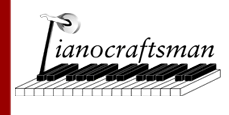

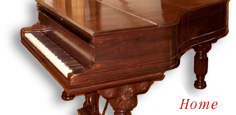
![]()
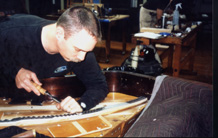
Notching a new bridge
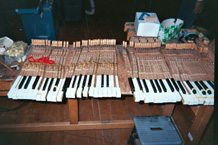
Rebushing piano keys
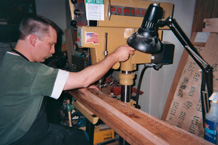
Drilling a new pinblock
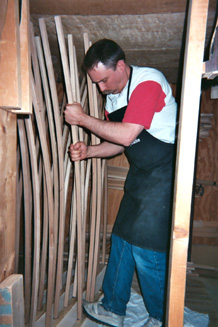
Clamping ribs to a new soundboard
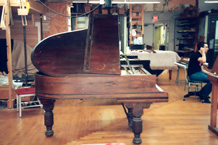
Before
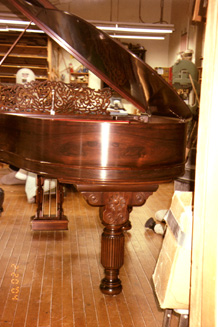
After
|
|
|||||||||||||||||||
|
REBUILDING Although rebuilding a piano may seem expensive, it may be an attractive, cost-effective alternative to purchasing a new grand piano. A piano manufactured 50 or more years ago represents a high water shed mark in the history of the manufacturing of pianos. If a highly-qualified RPT replaces your piano's key components and refinishes its external case parts, your rebuilt piano will offer far greater integrity, better sound and perform at a higher level than an inexpensive new piano.
Rebuilding a Steinway might cost between $20K - $40K, and purchasing a comparable new piano might cost between $45K - $90K. These premium pianos are as valuable as gold so it's well worth the investment to rebuild them. If you own a lower-priced grand piano, there is an alternative that will allow you to enjoy a "rejuvenated" instrument at a reasonable cost. A "partial rebuild" allows you to retain your original soundboard. This represents a terrific alternative to the costly purchase of a new grand piano. You will find that sentiment often influences your decision. If you would like to preserve the past or are attached to an old piano, rebuilding is a terrific option that you should explore. Whether you consider a complete or partial rebuild, the process should begin with a thorough appraisal, quote and comparison with other available options. CONSIDERATIONS FOR REBUILDING YOUR PIANO The rebuilding of a piano can be viewed in three sections: the top section, action and case. Top Section The soundboard is one of the largest pieces of wood in your piano. More than 400 pounds of force bear down on the piano's soundboard 24 hours a day, seven days a week. When a soundboard is repaired for cracks, it will not only be aesthetically beautiful, but will also provide acceptable performance in years to come. This is a much less expensive option than replacement. When a soundboard is replaced, you'll be giving new life back to your piano. Superior soundboard materials that are available today as well as new methods in replacement techniques will restore your piano's original sound, tone and power. Bridges are structures that transfer the sound from the piano's strings to the soundboard. A faulty or failing bridge can result in poor tone, lack of power and/or excessive false beating strings that make the piano sound "out of tune." Sometimes a bridge can be repaired and other times it may require a new bridge cap. The bridge is a "make or break" component in the quality of a piano's sound. Action Case Rebuilding is a lengthy process that demands that a highly qualified technician and the client are completely aware of each other's concerns, schedules and desires. A well-done rebuild will add decades more life to your prized instrument. |
©2004 Pianocraftsman, All Rights Reserved.
Pianocraftsman is not responsible for any errors or omissions.
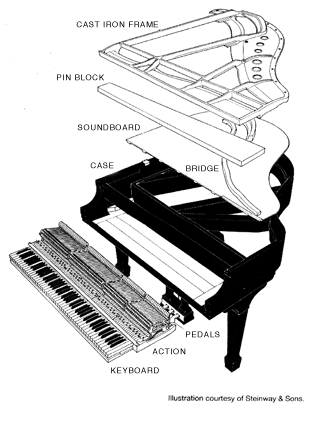 If
you own an old Steinway, Mason & Hamlin or other premium brand
piano, rebuilding is always an attractive option. A "complete
rebuild" includes the top section, action and case.
If
you own an old Steinway, Mason & Hamlin or other premium brand
piano, rebuilding is always an attractive option. A "complete
rebuild" includes the top section, action and case.